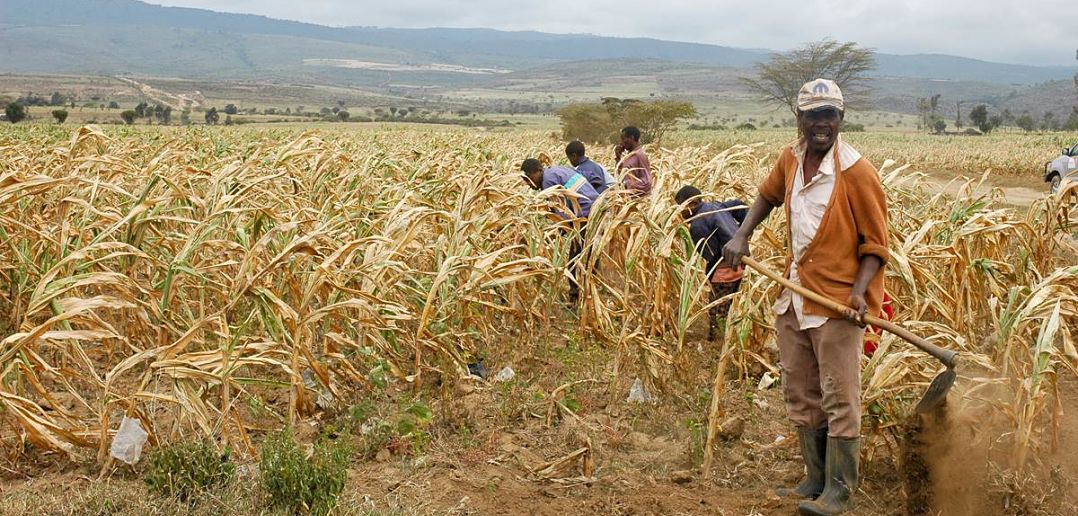Zimbabwe Warns of Social Gap in Climate Finance
Less than 3 percent of global climate finance supports Africa’s just transition, warns Zimbabwe; sovereign yields above 28 percent (ZWE:TBILLS) highlight fiscal fragility even as reforms seek inclusive green growth.

The essential debate around climate finance in Africa has increasingly shifted its focus from aggregate dollar commitments to fundamental questions of equity and distribution. Zimbabwe’s recent warning that less than 3 percent of global climate finance explicitly supports “just transition” programs—those specifically designed to protect workers, women, and vulnerable communities—reveals a deep structural imbalance at the heart of the continent’s green-transition agenda.
While billions of dollars flow toward renewable energy, carbon offsets, and large infrastructure projects, only a fraction is currently directed toward the social mechanisms that secure political legitimacy and long-term resilience. This institutional neglect risks entrenching inequality and social instability even as Africa attempts to move toward a much-needed lower-carbon growth model.
Zimbabwe’s case is deeply emblematic of a wider, concerning regional pattern. Between 2020 and 2024, Africa received roughly US $30 billion to US $35 billion annually in climate-related funding—a figure representing less than one-tenth of the global total, according to multilateral data. Of that limited amount, over 70 percent targeted mitigation projects such as utility-scale solar and hydropower installations, leaving minimal financing for adaptation and virtually non-earmarked social transition measures.
Zimbabwe, grappling with inflation above 20 percent, a high public-debt ratio near 78 percent of GDP, and acute domestic energy shortfalls, has been forced to rely on concessional lines from the African Development Bank (AFDB) and bilateral funds to pilot small-scale green-jobs programs. Yet the fundamental absence of sustained funding for labor reskilling, robust community engagement, and local manufacturing content risks deepening socioeconomic stress and reversing fragile gains.
The mechanisms driving this structural imbalance are partly institutional and market-driven. Global climate finance architecture remains rigidly dominated by project-based instruments that preferentially reward "bankable" hard infrastructure rather than social capacity-building initiatives. Major development banks and investors overwhelmingly seek measurable returns in terms of megawatts or verifiable emission reductions, metrics that naturally privilege capital-intensive assets over essential human-centered interventions.
Zimbabwe’s warning—echoing concerns voiced across southern Africa—suggests that this narrow, technical approach fundamentally misreads the region’s political economy: without genuine, inclusive community participation, green infrastructure can exacerbate rather than mitigate instability and political risk.
The macroeconomic implications of this financing choice are significant and far-reaching. A transition that neglects local labor markets fundamentally undermines domestic demand and erodes long-term fiscal sustainability. For Zimbabwe, where agriculture and mining collectively employ roughly 60 percent of the labor force, a sudden shift to cleaner energy and mechanized processes without comprehensive reskilling could displace tens of thousands of workers, severely reducing household incomes and tax receipts.
This creates a destructive feedback loop that feeds back into sovereign risk; already, local-currency Treasury bills (ZWE:TBILLS) yield above 28 percent, a figure reflecting both high inflation expectations and deep structural uncertainty. Conversely, embedding just-transition spending within climate frameworks could powerfully act as a stabilizer—boosting employment, sustaining consumption, and anchoring social cohesion during necessary economic reform.
Regionally, the issue also sharply shapes competitiveness and investment flow. South Africa’s Just Energy Transition Partnership (JETP), valued near US $8.5 billion, has rapidly become a benchmark for successfully integrating labor and social dimensions into green-funding deals. Zimbabwe and its neighbors increasingly fear exclusion from such comprehensive packages, which reinforces a damaging two-tier system within Africa’s energy transition.
In policy terms, this calls urgently for new blended-finance tools that tie capital flows directly to measurable social outcomes—including local content quotas, verifiable wage guarantees, and retraining benchmarks—alongside conventional emission targets. For multilateral investors, integrating these social metrics could significantly reduce project-level risk by guaranteeing community buy-in and minimizing politically motivated disruption.
Market reactions to Zimbabwe’s candid appeal have been muted but are not indifferent to the risk. Regional sovereign-bond spreads for high-yield African credits have tightened modestly as global investors rotate back into frontier debt, yet the genuine sustainability component of this capital remains thin. ESG-labeled African issuance (ESGAFRICA) totaled roughly US $5 billion in 2025 year-to-date, a volume representing less than 2 percent of global issuance, and very few instruments meaningfully capture specific social-transition clauses. For Zimbabwe, whose access to hard-currency markets remains severely constrained, aligning future borrowing frameworks with verifiable social metrics could both broaden the potential investor base and ultimately reduce financing costs over time.
Looking ahead, the signal is abundantly clear: for Africa’s climate transition to be both bankable and just, the global financial architecture must urgently internalize labor and equity considerations as primary factors. Zimbabwe’s firm stance ahead of COP30 underscores that the next phase of climate finance will not be judged solely on aggregate dollar commitments but on distributional quality—specifically, how benefits reliably reach workers, smallholders, and marginalized communities.
The next 18–24 months will reveal whether multilateral funds adopt measurable “just transition” allocations, potentially tracking metrics such as the percentage of climate finance with labor-reskilling components or gender-inclusive participation rates. If those metrics rise above 10 percent by 2027, Africa’s green transformation could gain crucial social traction; if not, the continent risks pursuing a low-carbon transition that is economically efficient but politically brittle and socially unjust.





